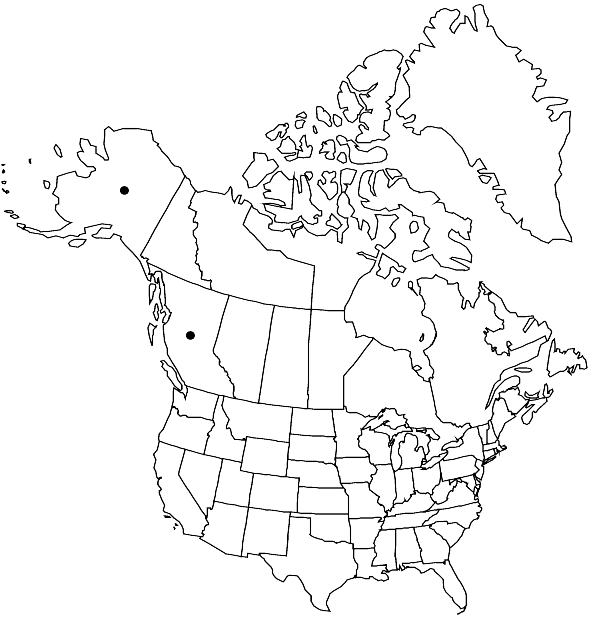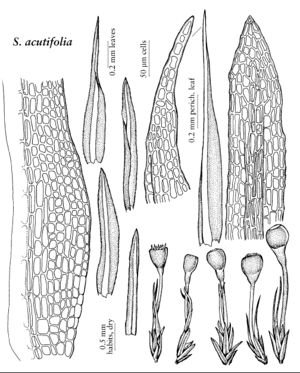Difference between revisions of "Seligeria acutifolia"
in C. Hartman, Handb. Skand. Fl. ed. 9, 2: 75. 1864,.
FNA>Volume Importer |
imported>Volume Importer |
||
| Line 41: | Line 41: | ||
|publication year= | |publication year= | ||
|special status= | |special status= | ||
| − | |source xml=https:// | + | |source xml=https://bibilujan@bitbucket.org/aafc-mbb/fna-data-curation.git/src/bb6b7e3a7de7d3b7888a1ad48c7fd8f5c722d8d6/coarse_grained_fna_xml/V27/V27_439.xml |
|genus=Seligeria | |genus=Seligeria | ||
|species=Seligeria acutifolia | |species=Seligeria acutifolia | ||
Revision as of 22:32, 27 May 2020
Plants delicate, light green. Leaves broadly linear to lanceolate, shortly subulate from broad base, acute; costae percurrent; margins entire; leaf cells (1–)3:1; perichaetial leaves subulate from sheathing base, abruptly differentiated. Seta 1–1.5 mm, straight, stout. Capsule hemispheric to broadly ovate, as long as broad, widest at mouth, peristome of 16 well-developed teeth; columella immersed. Spores 12–14 µm.
Habitat: Calcareous substrates
Distribution

B.C., Alaska, Europe, Asia.
Discussion
Seligeria acutifolia is known from only a few localities along the hyperoceanic West Coast. It differs from similar species in having sharply differentiated perichaetial leaves and a short, stout seta. The capsules are usually shortly exserted or sometimes emergent.
Selected References
None.
